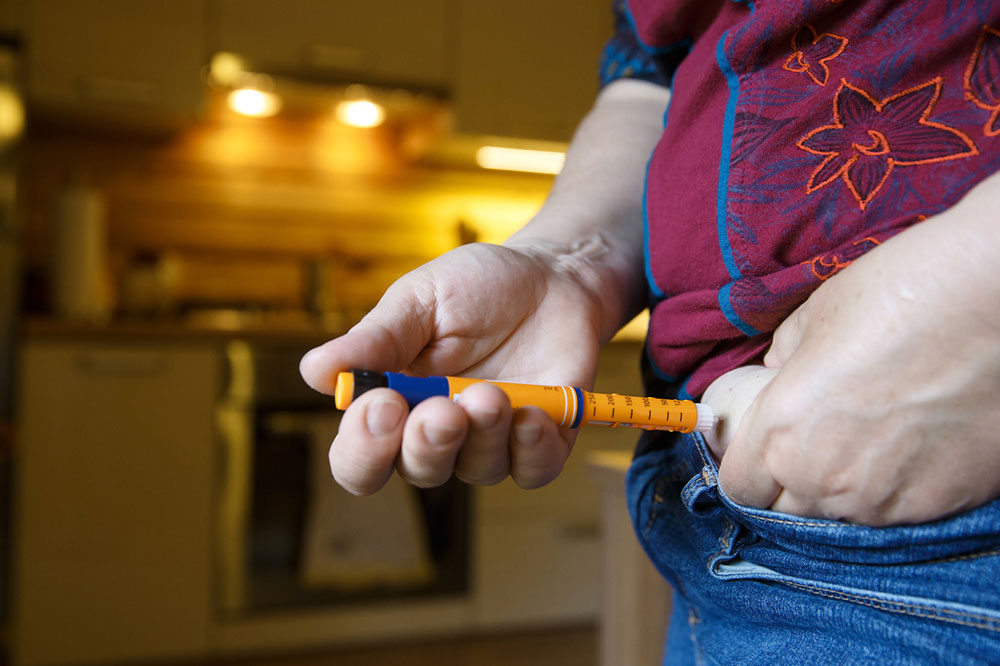4 Essential Things to Know About Type 2 Diabetes
Diabetes is a chronic health condition where the body cannot regulate the amount of sugar in the blood. As a result, it goes higher or lower than the normal levels, leading to several symptoms. The disease can affect both children and adults. Further, it is classified as type 1 and type 2, depending on the cause. Having some information about type 2 diabetes can make it relatively easy to manage.

How is type 2 diabetes caused?
The pancreas produces insulin, a hormone responsible for regulating blood sugar levels. Type 2 diabetes develops when the body cannot use or process insulin and becomes insulin resistant. Consequently, blood sugar goes above normal levels. Several factors can contribute to insulin resistance, such as unhealthy eating habits, lack of physical activity, and even genetics. Old age is also a risk factor. Although there is no cure, several latest treatments for type 2 diabetes help lower insulin resistance.
In some women, sugar levels may rise during pregnancy, leading to gestational diabetes, a lesser-known type of the disease. It primarily happens when the body cannot respond to insulin during pregnancy. Doctors continuously monitor the health of the fetus, managing the impact of high blood sugar during this time. While the problem is said to be temporary in this case, the mother is at a higher risk of getting type 2 diabetes later.
How does the condition impact the patient?
Individuals experience various symptoms, the most common ones being frequent urination, blurry vision, and wounds that heal slowly. If undiagnosed and untreated, the disease can lead to multiple complications that affect different organs and overall health, such as erectile dysfunction, bacterial/fungal infections, hearing problems, nerve damage, and early cataract or glaucoma.
It is necessary to note that, apart from the above symptoms and complications, blood sugar irregularities can lead to other severe health conditions like cardiovascular disease, dementia, Alzheimer’s, hypertension, sleep apnea, and kidney disease. Therefore, individuals must be aware of the causes and try to gain maximum info for type 2 diabetes prevention.
What are the treatment options?
The condition has no cure. The goal is to control blood sugar levels with appropriate treatment options, lifestyle changes, healthy foods, or a combination of these. Such measures can also lower the risk of complications like nerve damage and cardiovascular diseases and improve the patient’s quality of life.
Doctors recommend oral options as the first line of treatment for type 2 diabetes. If that does not work, the patient may require external insulin. There are many ways of administering it at home, but one must initially consult a doctor or healthcare provider. The latest insulin treatments for type 2 diabetes come with easy-to-use devices, allowing patients to administer doses without much assistance. Insulin pens, pumps, and sprays are also available.
Interestingly, healthy lifestyle changes and regular physical activity are sufficient to manage the condition in some cases. Doctors recommend a low-carb meal plan with exercises like walking, cycling, and swimming. Fitting an artificial pancreas is also possible depending on the patient’s health situation if other options fail.
What are the latest treatments for type 2 diabetes?
Health scientists worldwide are continuously researching to find a cure for the disease. It has become a priority as the number of affected individuals continues to rise. Below is some valuable information about the type 2 diabetes treatment advancements:
New oral treatments
The latest oral treatments for type 2 diabetes help manage blood sugar in different ways, like improving insulin production, making the tissues more sensitive to insulin, or slowing down the digestion of sugar. Combination therapies are also being studied. However, there are dosage limits, and these must be used only under the supervision of a doctor. The treatments can cause side effects that can be harmful.
Advancements in insulin devices
Healthcare manufacturing companies are constantly introducing innovations in insulin devices. The latest insulin pens can remind a person about their next dose, calculate the dosage based on current blood sugar levels and food intake, and connect to a mobile phone. Some fast-acting options can also be inhaled, but these are not advisable for people with pre-existing respiratory or lung-related issues.
Continuous glucose monitors (CGMs)
These consist of a tiny sensor to be inserted under the skin of the belly or arm. It tracks the amount of glucose in the cells and transmits the data to a cell phone or another device. Users get an alert when the readings go high or low, along with other info to manage type 2 diabetes by taking timely measures. GCMs have stopped the need to draw blood regularly to check sugar levels. CGM-insulin pumps are also available, which adjust the insulin dosage as per sugar level.




